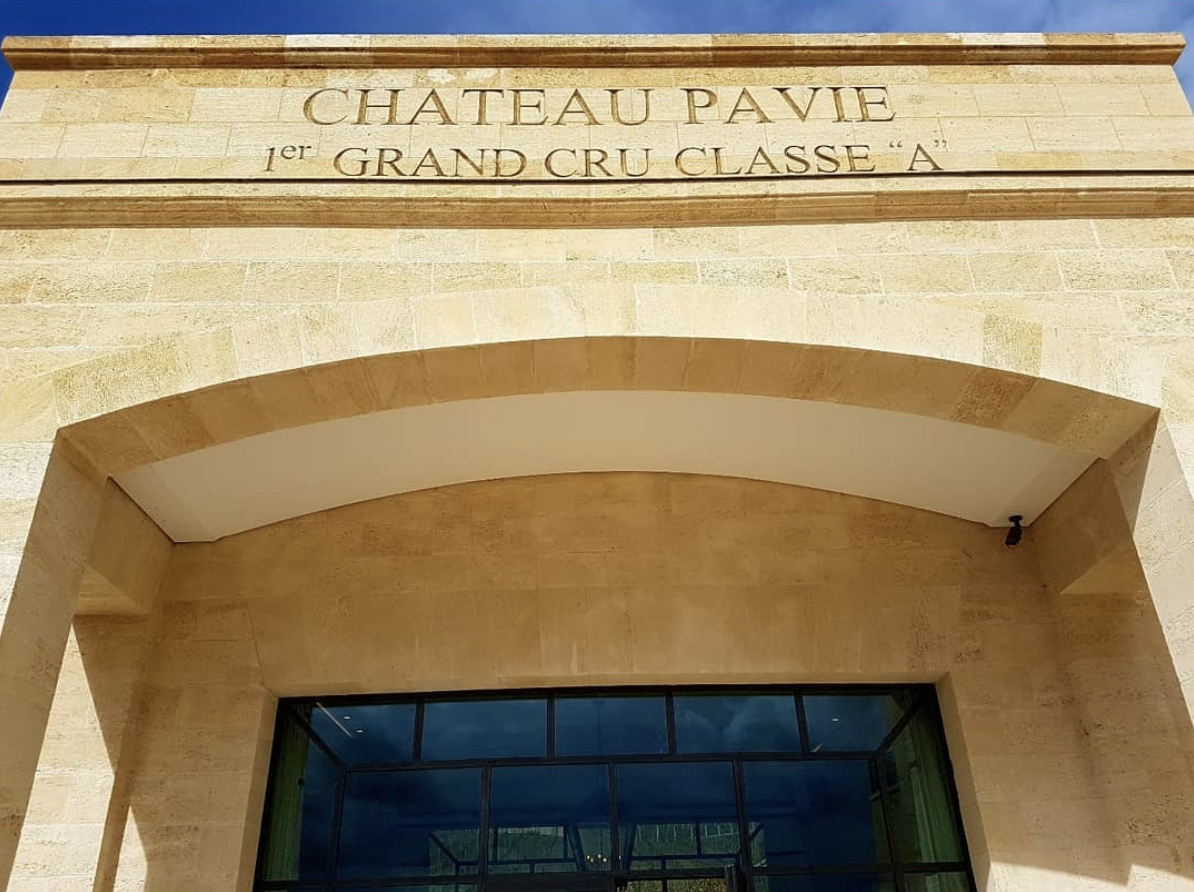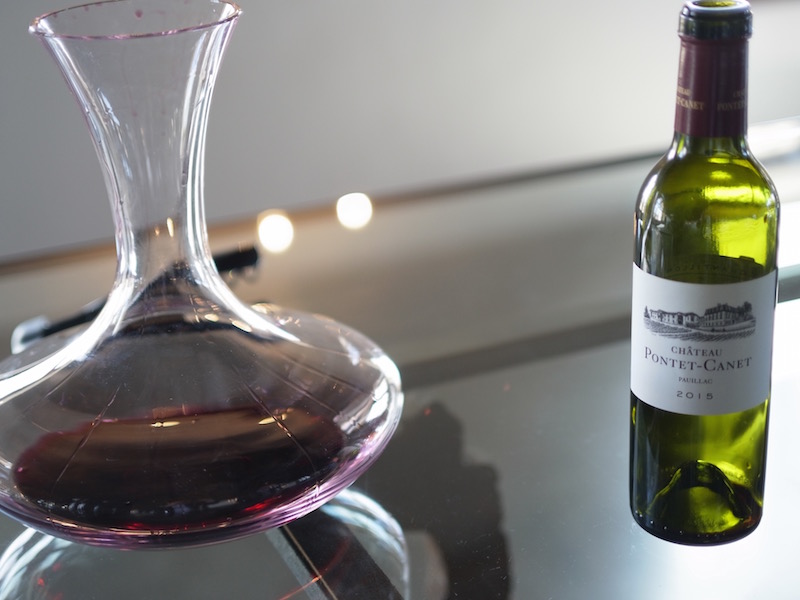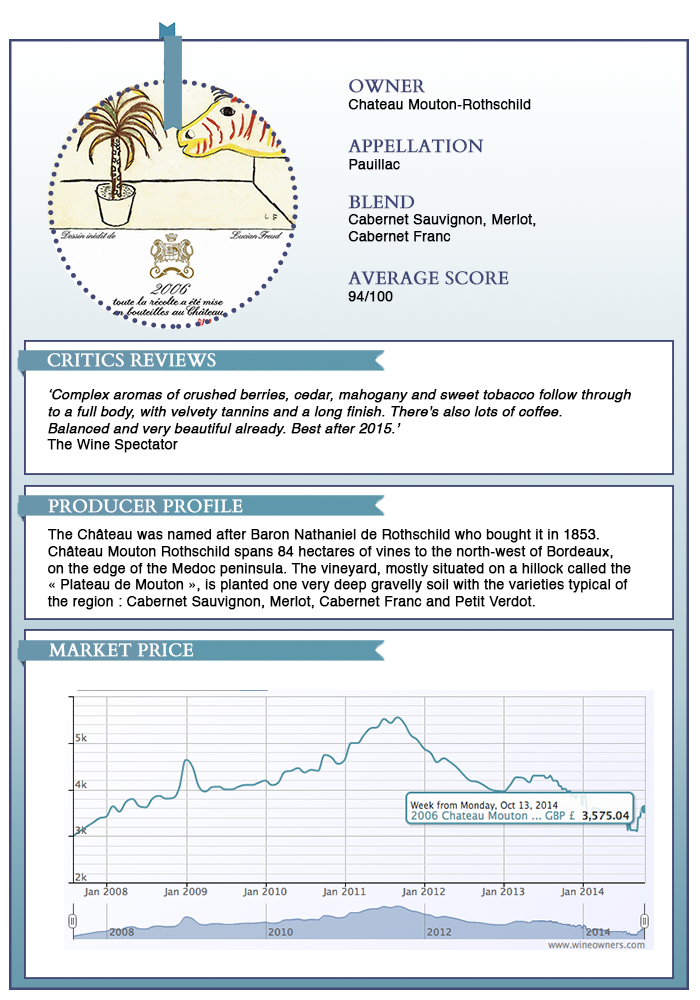by Wine Owners
Posted on 2018-04-11
Reflecting on day two, with the heady aromas of Pavie and co still flickering around our mouths, and a hard day's tasting behind us, we searched for patterns and rules. But, on reflection, there really is no rule that we can suggest.

©Jonathan Reeve / Wine Owners
An Unexpected Guest
Cabernet Sauvignon made an larger-than-usual appearance in several top wines we tried today, most noticeably Vieux Chateau Certan and Cheval Blanc. Typically, VCC contains just 1% Cabernet Sauvignon, but in 2017 that was increased to 5%. Although there was no overt Cabernet Sauvignon aroma profile in the wine, its freshness and focus almost certainly added to the completeness of the mouthfeel. Cheval Blanc is a quite different story; 2017 is the first vintage in many years that the wine will contain Cabernet Sauvignon.
©Jonathan Reeve / Wine Owners
Shining Examples of Franc
Cabernet Franc is absolutely not in the dog house in 2017, despite the general impression that it had a tough vintage. Three stand-out wines from today's line-up contained substantial levels of Cabernet Franc; Chateau Troplong- Mondot, Chateau Canon and Cheval Blanc's Petit Cheval. The former pair included around 25% Cab Franc, and Le Petit Cheval put on a blinding performance with a relatively massive 48%. So, while the variety may have had a very tough vintage in some parts of the right bank, it is showing admirably in others.
Frost Patterns
There is a lot of emphasis this week on The Frost (27th and 28th April 2017), and rightly so; it was absolutely devastating from some producers, and has had clear repercussions in their 2017 wines. But not all vineyards were affected, and some seem to have escaped entirely unscathed. Chateau Canon, for example, was almost completely untouched by frost. The wines are suitably excellent - refined, bright, tight and focused. Vieux Chateau Certan - our second tasting of the day - is another example of a winery seemingly undaunted by the frost. It tasted magnificent, silky and balanced this morning, all those tannins ago. But many of those right bank producers who did experience frost have found ways to produce good, and even excellent wines. Some adjusted the blend of grapes they use. Soutard is a fantastic and successful example of this; their 2017 is very good, and will be a great value buy when released. Their 2017 blend was 90% Merlot (significantly higher than the 65% normally used), with Cabernet Franc, Cab Sauvignon and Malbec making up the remaining 10%.
Chateau Gazin was untouched by frost, but the team there nonetheless felt that their Cab Franc wasn't quite up to scratch. They took the decision to boost their blend up to a fat 95% Merlot, resulting in a 2017 grand vin with a silky mouthfeel, great balance, and an enticing touch of kirsch dancing around on the nose.
On the left bank yesterday, the story was quite different. The frost was relatively indiscriminate there, affecting most vineyards to some extent. But here in the right bank, the hillier landscape allowed the freezing air to drain away from some places...and to gather catastrophically in others. Thus the distribution of frost damage was much more patchy here. Clay-based areas and lower-lying sites were obviously hit very hard by the frost. We do feel for those producers hit hardest - it was clearly not an easy vintage for them, and they face challenges ahead when the wines are released to market.
©Jonathan Reeve / Wine Owners
So the rule really is that there is no rule here. Which makes exhaustive primeurs tasting all the more valuable. Tomorrow (Wednesday) we head to Graves and Pessac-Leognon in the morning, to taste the Haut-Brion wines, and then on to Pape Clement and Malartic Lagraviere. We shall see if, and to what extent, the gravel soils helped mitigate the frost impact here...
by Wine Owners
Posted on 2016-04-07
Back from Bordeaux and having tasted widely across all the
major communes, for a good proportion of the wines at least twice, we can
report that 2015 will be a very good to excellent overall vintage.
The wines have nice density accompanied by varying degrees
of power. But it’s best to avoid sweeping generalisations in this vintage, as
this overview explains. Read on...

Those who say the heights were achieved on the right bank
are overlooking a number of exceptional wines from across many other appellations. St. Emilion has been proposed as the top-performing commune
of the vintage, but there are plenty of examples that are too big and powerful.
Those Chateaux really do need to wake up to the changing market that is
thankfully favouring balance once more.
Pomerol has seen some great successes, yet different styles
of vinification between producers have resulted in wines with very different
characters. On the one hand are those that are pure with a brightly illuminated
core of fruit, ripe elegant tannins and a taut finale. On the other are styles
that are evidently riper, with imperceptible tannins and an extremely smooth,
even edgeless, finish. Whilst these are extremely attractive and very easy to drink after just a few months in cask we wonder if they will stay the
long-term course and evolve into compelling wines worthy of their glossy and alluring first
showing.
Many state that the higher up the Medoc peninsular you go,
the less good are the wines due to higher mid-season rainfall than the right
bank, Margaux and Pessac-Leognan. That isn’t necessarily evident, perhaps with
the exception of Haut Médoc and Listrac.
Much-touted Margaux is indeed extremely consistent across
the board, to a degree we’ve not seen for many years. Yet in our view the most
impressive individual wines from the Medoc come from Pauillac and St. Julien,
perhaps with the exception of Chateaux Margaux itself and the broodingly structured Chateau Palmer.
St. Julien is a very consistent appellation once again.
Graves (Pessac Leognan) is excellent, and some historically big styled wines
have reined it in with exceptional results,making for a very impressive showing for the appellation overall.
Soil composition would appear to have as much to do with
variation between properties as levels of rainfall. It’s possible that this
variable will have been accentuated by a scorching July when drought conditions
had set in, with the vines showing heat stress by starting to drop leaves.
Relief came in early August with some heavy downpours and temperate August weather
accompanied by comparatively high hours of sunshine.
The dry, hot July conditions were compared to 2003. Yet
unlike that vintage when night time temperatures were steamy, 2015 experienced
cooler hours of darkness, and many of the wines do have a pleasant acidity in
the mid palate, whilst the best have a crystalline fruit quality and are salivant - mouth-watering.
Notwithstanding the very high July temperatures, picking
took place from around the middle of September through to October 7th,
with lovely late-season weather giving the fruit plenty of hang time to fully
ripen, and producers were able to pick selectively at their leisure ahead of
the forecasted rains at the start of the second week in October.
It’s been said Merlot is the standout grape of the vintage
and the best since 2010. That’s true of
the right bank overall, but not in the Medoc, where the best wines contain
85%-92% Cabernet Sauvignon.
Also, some of the greatest expressions of the vintage are
wines that contain significant proportions of Cabernet Franc in their blends.
Vieux Chateau Certan, Cheval Blanc, Figeac and Carmes Haut Brion are all gorgeous
benchmarks.
Finally the big question: is 2015 in the same league as
2009/ 2010? Or perhaps 2005, a vintage which in our opinion may well prove the
equal of 2010.It doesn’t look
like it at this stage, and many Negociants
and producers we spoke to didn’t look to equate 2015 with the monumental 2010s.
This is undoubtedly an excellent vintage. We do not think it is a legendary one.
What’s next?
We'll be sharing our tasting notes of the vintage over the
next few days.
You’ll be able to view a number of videos we shot of
producer, Negociant and merchant opinion of the vintage and their favourite
wines.
We’ll review our recommendations and wines we cautioned
against buying early from the 2014 vintage release based on the best wines of
the vintage, which we subjected to a rigorous price per points analysis. You’ll
be able to judge for yourself how well our ‘buys’ and ‘do not buy early’ guidance has performed in the last year - notwithstanding they are still pre-arrivals.
As prices of Bordeaux 2015s release (which we are told will be a long and drawn out affair this year) we shall publish our
price per points analysis, highlighting the buys of the vintage; pinpointing
comparable back vintages that look like good value against a range of other
vintages; and highlighting the wines that are too highly priced at first
release to warrant buying early.
by Wine Owners
Posted on 2014-10-13


